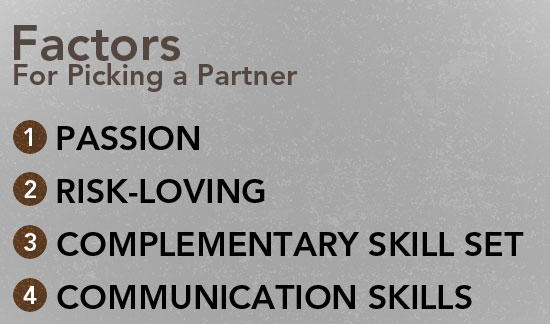
Despite the overall economic downturn, there seems to be yet another boom in web startups. In the ’90s, we saw the explosion of the Internet’s first big names, like eBay, Yahoo, Amazon, and others. In the 2000′s, social networking and the beginnings of web apps took off, planting MySpace, Facebook, and Flickr firmly on the map–the so-called Web 2.0.
But times have changed yet again, and we’re now in a new kind of web startup boom; one that is on a smaller scale, yet more prevalent due to more accessible development tools and cheaper infrastructures (powered by affordable cloud-based services such as Amazon S3). This is the app boom. The focus is on utility, cost-effectiveness, and highly targeted solutions to common problems. This can range from niche web apps to mobile device apps for iOS (iPhone, iPad, and iPod touch) and Android.
Today’s web startups are leveraging the technological and social advancements we’ve made over the past two decades, packaging them into useful tools meant to fit right into a person’s daily life.
Why Web Developers Become Startup Founders
The bulk of today’s apps and services are web-based and internet-enabled in one form or another. So it’s no surprise that web developers so often become startup entrepreneurs. Having the capability in-house to quickly design and produce a high-quality app certainly makes things easier for today’s startup entrepreneurs.
But I think this connection goes even deeper. Web developers (such as myself), by nature, like to build things. In doing so, we are naturally problem-solvers. We take the requirements given to us (often by a client or boss), and devise the best way to achieve these objectives using the tools that are available to us.
So what happens when we’re not working on client projects? If you’re anything like me, you’re thinking of ways to use your skills and experience to build tools that are useful and have potential to launch a successful new business. Instapaper, for example, is a widely successful web app startup founded and developed by a single web developer.

Equipped with our expertise, some spare time (or overtime), and perhaps some funding from our own bank account, launching a new startup might be an attractive option for the web developer looking to branch out.
In this article, I aim to guide you through a few things to consider as you get rolling with your first startup.
How to Choose the Right Idea
If you’re like me, you’ve probably brainstormed dozens of ideas for products by now. You might even be stockpiling domain names just in case you ever decide to move on one of these ideas.
So how do you know which ideas are worth pursuing?
Scratch Your Own Itch
Conventional wisdom would tell you to choose the idea with the most profit potential and a proven market. Sure, these are important factors; after all, your product needs to make money, and you need to find customers willing to pay you for it!
But there’s one key factor I look for when choosing an idea to pursue: Is it something that I would personally buy and use?
To restate the question: Does it solve a problem that I personally confront on a daily basis? By "scratching your own itch," you ensure this is an idea you’re truly passionate about. If user experience is the most important factor when designing a product (and I believe that it is), you can bet that you’ll craft the best experience possible if you are user #1.
Leverage Your Existing Skill Set
You also want to choose something that aligns with your expertise. I’ve had many ideas for iPhone apps that I think are winners. Unfortunately, I have zero experience with iPhone app development. Therefore, I’ll leave these ideas alone and pursue something else which falls more in line with what I already specialize in.
Case Example: WP Bids
To illustrate what I mean, here’s the story behind how I came up the idea for WP Bids, my own startup.
Identifying a Problem (Scratching My Own Itch)
As a freelance web designer, writing project proposals is a very important part of my business. The proposal, or "bid", is my final pitch at winning a new client. It’s basically a document, which outlines the scope of work, time estimate, and price quote for a particular project. I had been relying on MS Word and Google Docs to write up these proposals. The process was clunky, very time consuming, and I wasn’t happy with the design and presentation options that these tools provided. I needed some kind of template system that I can tweak to my liking and speed up the process. Much like I do when tweaking a website or a WordPress theme. Light bulb!
Executing the Solution Using an Existing Skill Set
Since I had already been specializing in WordPress theme development, and since I felt very comfortable using the WordPress interface, I decided to build my proposal-creation tool as an app built on top of WordPress. I created it in the form of a specialized WordPress theme. WP Bids has slowly gained interest from fellow freelancers (particularly those who use WordPress a lot), but more importantly, it has proven to be a valuable tool for my own client business.
Finding the Right Partner
Sometimes going it alone can work, but launching a startup with a partner or two can be much more rewarding.
Needless to say, when it comes to productivity, two heads are better than one. Even more important is the value of collaboration. Having a partner who shares your vision and who will be there to bounce ideas around with, keep you in check when you’re taking things in the wrong direction, and balance out your areas of weakness with their strengths are benefits of having a partner.
But it isn’t enough to simply find any partner. You must find the right partner. Ideally, you and your partner should already have some kind of relationship to build on. If you already know how they work and what they’re like on a personal level, you can skip a lot of the "discovery" phase.
Of course, you may not know anyone in your circle that is a good fit as a partner. That’s OK. Here are some suggestions for finding a potential business partner.
Referrals and Social Networking
Ask around in your network; ask around on Twitter, Facebook, LinkedIn, etc. Contact known experts in the niche of your startup idea.
Do you follow the blog of a few guys you think might be a good fit? Shoot them an email; you never know who may be looking for a new venture.
Job Boards, Forums and Directories
Check out FreelanceSwitch and Drawar, and click through to a few portfolios or blogs of users. Check out directories and listings such as ProgrammerMeetDesigner, PartnerUp, Startuply, and 37signals Job Board. Do some background research on each candidate (check out their personal site and Twitter feed, for example). Send them an email, and take it from there.
Web Design Conferences and Meetups
Check out Lanyrd to find upcoming conferences near you.
Key Factors for Choosing the Right Partner
Here are a few factors I look for in a business partner, in order of importance:
- Passion: They have to share your level of passion for the idea, as well as your level of self-motivation.
- Willingness to take risks: Starting a business is risky–there’s no getting around it. It requires sacrifice in the form of working for nothing, working overtime, and sometimes investing money. If your partner isn’t on board, it won’t work.
- Complementary expertise: Typically, you will share many skills. But there should be areas where your partner’s strengths make up for your weaknesses. You want to avoid partnering with someone who is a carbon copy of yourself.
- Communication skills: You will spend countless hours talking and emailing with one another, so effective written and spoken skills are a must. They should also be accessible. Nobody appreciates a colleague who doesn’t answer emails or doesn’t sign into Skype for days or weeks at a time.

Managing and Planning Your Time Commitments
More often than not, your biggest investment in your new startup will be your time. A lot of your time. It’s essential that your time management skills are in top notch form. Otherwise, there is no way your startup project will materialize, let alone achieve success.
The biggest hurdle is balancing your time between your day job (i.e. the gig that pays your bills), and your work on the startup, which of course will be unpaid (at least in the beginning).
There are obvious financial concerns to be aware of. Since your work on the startup will be taking you away from your paid work, you’ll need to prepare yourself for potential dips in income. Perhaps this means padding your bank account with extra savings before you start, or building your team of trusted sub-contractors and virtual assistants to help you manage the workload.
It’s also important that you map out an estimate of the time you plan to spend preparing and working on your startup. Have a ballpark number of hours in your head? Double it. The result will be the more accurate of the two. Building a web startup entails more things than a typical web development project does.
Things That Will Take Time
Here’s a list of things to take into account when planning your time:
- Conceptualizing the idea–this can take weeks and will likely be reworked several times over the course of the process.
- Pitching the idea to friends and getting their feedback.
- Crafting the business model.
- Creating your marketing plan.
- Wireframes, prototypes, and designs, redesigns, and more redesigns.
- Site development, testing, and debugging.
- Blogging and marketing, which are time consuming and will be an ongoing effort.
- Legal and partnership-related tasks.
The list goes on, and many items will likely be repeated several times as you inch towards launch and beyond.
Designing Your Product: Battling Feature Creep
Think your clients are the only ones who are guilty of feature creep? Think again. When you’re designing your ideal product that you yourself will want to use, it’s easy to keep adding to the "awesomeness" of the product every time another idea strikes.
The key is to remain focused like a laser on the core functionality and your original project scope. Take note of those extra ideas, but don’t implement them in your first version. If you keep adding to the scope, you’ll never proceed to launch!
This is where having a partner really comes in handy. Not only are they there to bounce ideas off of, but they can also be there to keep you in check when your ideas are taking you away from the core feature set.
Every time a new idea for a feature pops up, ask yourselves, Is it essential for the product to function or can it at least work without it? Based on your answer to this question, you can group your feature ideas into two categories.
"Essentials" Idea Category
This is your to-do list for phase 1 of development. These features must be designed and implemented from the start. This is what you will spend the bulk of your pre-launch time on.
"Nice to Have" Idea Category
These are enhancements; Things that might make the product better, but are not required for it to function in its most basic form. You might choose to implement these post-launch when you’re ready to iterate on your product; perhaps these ideas could migrate to the "essentials" idea category after production, based on user feedback.
Your goal in the short term should be to get the essentials up and running as quickly as possible. The advice we’ve heard time and time again from other startups rings true: Launch early, get user feedback, and iterate.
If you can’t bang through the first list, the "essentials," your product will never get off the ground and ultimately will result in waste of your valuable time.
Craft Your Marketing Plan
As early as you begin mapping out your product, you should be constructing your marketing strategy. As a bootstrapped startup, much of your marketing will require quite a bit of time commitment from you and your partners.
Blogging
Blogging is likely a major part of any web startup’s promotional activities. I’m an avid fan of Mixergy, and there is one common storyline I hear from many successful web startup founders interviewed on the startup interview site: They launched their product off of the success of their blog.

Building an audience ahead of time will give you a huge head start when it comes time to find your first users for your new product.
But many of us don’t have massive traffic to our own blogs. That’s OK. In this case, I highly recommend building relationships with other more popular blogs to get your name out there. I have found success over the past few years as a guest writer on blogs like this one, Mashable, FreelanceSwitch, and others.
Not only has guest blogging resulted in increased exposure for my work as a web designer, it also gives me an "in" when launching or promoting a product. For example, my WP Bids WordPress theme has been reviewed on Netsetter and included as a prize for a FreelanceSwitch promotion thanks to my relationship with editors at Envato.
Traditional Internet Marketing
There are other more traditional marketing strategies such as CPC and banner advertising. These can have varying levels of effectiveness depending on your product, your overall branding strategy, and the amount of money you plan to invest. Paid advertising is worth considering. But before you go and create your Advertiser account on BuySellAds.com, you should make sure you and your partners are on the same page in terms of how much money you each plan to invest in your marketing campaign.
Social Networking
It goes without saying that you should have an active (and never automated) Twitter account to keep early adopters informed about your progress. Create a Facebook fan page as well, and keep it up to date.
Launch, Get Feedback, Iterate, Build Community (All at Once)
The goal is to launch your startup sooner rather than later, even if it’s not "perfect" yet. Here’s a word of advice: It will never be perfect. Perfection is a constantly moving target.
As you gain new users, you will receive new and constructive feedback. As your product progresses, new challenges arise. The key is to embrace change and iterate to fit the demands of your customers.
Launch, feedback, iterations, and building your community should be a continuous process. You can plan for this by designing your startup with flexibility in mind.
This idea of flexibility and malleability can be applied in every area of your startup:
- Concept: Is your idea locked in one place? Think of various directions your business might take you and see if there is anything you can do to make a potential transition easier.
- Startup’s name: Is it too focused, or can it represent anything? Choosing the name Zappos.com instead of ShoeSite.com (their original name) allowed the startup to venture into a wider array of products outside of just shoes.
- Business model: Are there alternate revenue sources you may want to explore? How might introducing these affect your customers and your business?
- Design: Like the name, is the design tied to a specific concept or is it fluid enough to evolve along with changes in your business?
- Code: Your code will change and change again. Is it clean, flexible, templated, modular, and editable? Are you logging the right data (some of which may not be useful now, but might be later)?
- Marketing: Always track and measure your results from marketing campaigns and social media efforts. Does your budget allow for changing strategies on the fly?
Over to You
For those who have made the transition from serving clients to selling products, what advice might you add for web developers becoming first-time entrepreneurs? Do you have an idea for a startup? If so, name one action you can take today that will move your potential startup forward.
Have questions about this topic? I’ll be monitoring and responding to comments. Ask away!


No comments:
Post a Comment